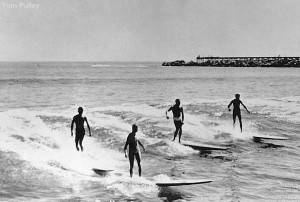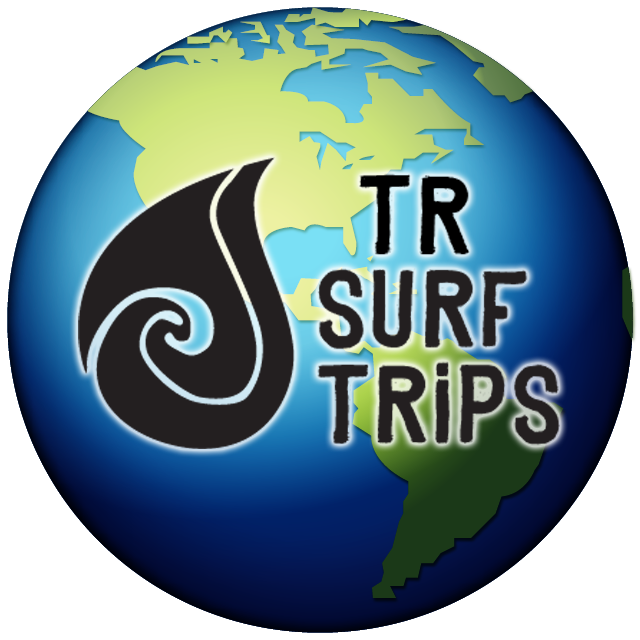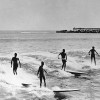
There is no exact record of when surfing originated. However the earliest documented cases of surfing appeared in the late 1700’s when European sailors arrived in Hawaii. In his journal, navigator James Cook described surfing in amazing detail.
He wrote, “Whenever, from stormy weather, or any extraordinary swell at sea, the impetuosity of the surf is increased to its utmost heights, they choose that time for this amusement: twenty or thirty of the natives, taking each a long narrow board, rounded at the ends, set out together from the shore.”
His journal entry is the first ever description of “he’e nalu”, the Hawaiian word for surfing. “He’e nalu” translates into English as “wave-sliding”. He also wrote that for the Hawaiians, surfing was a way to establish social rank. The man who was the best surfer became chief of the tribe, and he was awarded a surfboard made from the best tree in the village.
As we all know, a lot has to come together for a good day of surfing. We’re lucky enough to be able to check the swell from our phones and computers. However the Ancient Hawaiians relied on priests (Kahunas) to pray for and predict surf conditions.
Although surfing was a way to establish political power, the ancient Hawaiians believed it to be an art form more than anything else. They integrated it deeply into their culture and believed the ocean was one of the greatest teachers of all.

